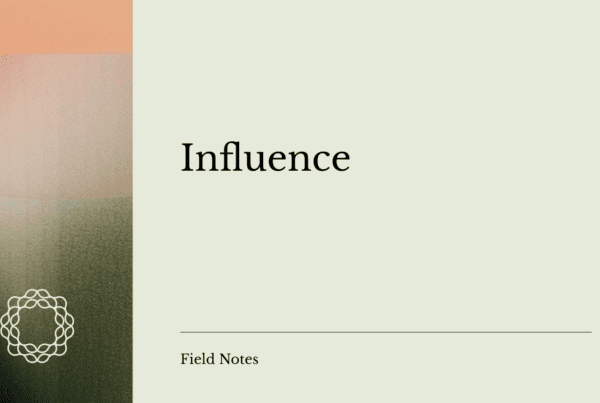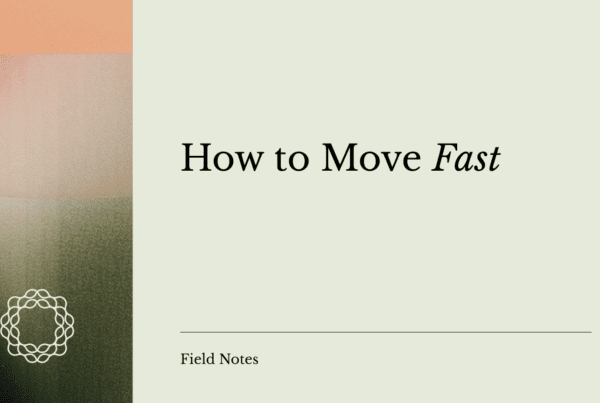
Thought experiment: how would you improve rail transit?
Sutherland gives this example in Alchemy.
In the rational, engineering mindset, we have only a few variables reducible to mathematical optimization – really just speed and capacity, and perhaps reducing delays across the board.
However, if we were to give the problem brief to a more creative firm, say, Disney, they may flip the question on its head and ask, “how do you make the journey from London to Manchester by train so enjoyable that people feel stupid for taking the car?”
Which is a much more open-ended question with a nearly unlimited surface area for potential solutions:
“Is it champagne on the trains? Is it ball pits on the trains? Do you actually just have really slow trains from Harry Potter going to Manchester, which means that every single tourist who visits London also visits Manchester?
There are loads of solutions to that problem. And that’s why people don’t like it. They’re much more comfortable in an institutional decision-making setting, making a model that has a single, notionally right answer—which is actually a bit crap—because you don’t get blamed for it.”
In no small way, he’s advocating for a psychological approach to innovation, which can often have an outsized benefit compared to mere mechanical innovation.
Here, also, he gives the example of Uber, which in addition to some brilliant engineering, they also largely solved for the discomfort of uncertainty:
“The Uber map is a psychological moonshot, because it does not reduce the waiting time for a taxi, but simply makes waiting 90 per cent less frustrating. This innovation came from the founder’s flash of insight (while watching a James Bond film, no less) that, regardless of what we say, we are much more bothered by the uncertainty of waiting than by the duration of a wait. The invention of the map was perhaps equivalent to multiplying the number of cabs on the road by a factor of ten – not because waiting times got any shorter, but because they felt ten times less irritating.”
I love this line of thinking and try to employ it wherever possible, including ostensibly performance marketing problems (Alchemy was a major source of inspiration throughout my experimentation career – just because you can measure it easily does not negate the potential for irrational and emotionally-driven tactics!).
The Doorman Isn’t Just Opening the Door
I talked to Erik Johnson on The Long Game recently, and I asked him about the potential impacts that AI may have on consumer behavior. He brought up an idea from Sutherland referred to as The Doorman Fallacy.
Imagine a consultant analyzing the front entrance of a five-star hotel. This consultant watches as guests enter, greeted by a uniformed doorman who holds the door open for them. And after a few moments of thought, the consultant makes a recommendation:
Replace the doorman with an automatic sliding door.
His reasoning is straightforward. The function of a doorman is to open doors. Automatic doors can do that at a lower cost, with no salary, no sick days, no breaks. The outcome, by his estimation, is the same.
But of course, a doorman isn’t just opening doors.
The doorman is creating an elevated experience—greeting guests by name, signaling status, providing security, handling bags, hailing taxis. His presence changes how people perceive the hotel. It makes them feel important. It makes them want to return.
The doorman isn’t actually an inefficiency. But because his impact isn’t neatly quantifiable—because there’s no direct, linear data point connecting his presence to increased revenue—the cost-optimizer doesn’t see it.
And this is the same mistake companies make in marketing every day.
The Most Effective Things Are Often Difficult to Measure
I came up through growth and experimentation—causal, analytical, trackable.
Omniscient Digital is built on the value proposition of driving attributable business outcomes through organic marketing. We measure our impact, optimize for revenue, and tie our work to clear business results.
We’re not only AI-forward – having built proprietary workflows to scale BOFU content, synthesize SERP analyses and streamline briefs, invoke subject matter expert data and transcripts in thought leadership content, and much much more – but we’ve been early adopters since the wave of gen AI started to swell.
We’ve created a handful of internal data products to analyze Surround Sound SEO saturation, pull VoC phrases out of sales transcripts and position them into clustered keyword maps, and automate internal linking based on page similarity.
We love this stuff.
And yet—
Some of the most powerful things we do are nearly impossible to track.
We invest heavily in in-person events, despite the fact that there’s no way to predictably draw a straight line from a casual conversation over drinks to closed revenue, except in hindsight, often years later and through many layers of serendipity.

We run a podcast, even though I haven’t checked the analytics in over a year. It’s just abundantly clear that it works without even checking the download numbers or even optimizing for scale.
And most recently, we launched a print magazine—a costly, beautifully designed, physical artifact—at a time when SEO LinkedIn is at arms over conflicting data on click-through-rate impacts of AI Overviews.

Technically, this lychee martini knocked off a few points on my Oura sleep score, though it did also unlock a lot of beautiful conversation and it tasted great.
If you were to look at this purely through a performance-marketing lens, it would seem like an illogical bet.
What’s the ROI of a print magazine?
Logically, there is none. The same content already exists online. We provide transcripts of our podcast. Nothing in the magazine is really new, at least from a content perspective.
And yet, it’s shockingly effective. It stands out.
We’ve begun mailing them out to select folks and I also recently brought them to an IRL meetup I threw in New York. It was a huge conversation piece.
And more recently, I brought just two copies to an event hosted by another friend (to deliver to previous podcast guests), the magazines inevitably ended up causing conversation throughout the table.
People’s eyes lit up when they saw them. They asked about them. More than a few people told me they wanted a copy, and I’m happy to oblige. And then my friend Mariya texted me later:
“FYI, every single person at the meetup asked me about y’all’s book. It really grabs attention. Multiple people pulled out their phones and went to Omniscient’s site in front of me.”
None of this would have happened if the content had simply remained a set of digital files.
The magazine, in itself, is an object of beauty, a costly display whose costliness and beauty is the point. The fact that it is scarce, physical, and expensive makes it more compelling.
We’re working with another client on a magazine project as well, and they’ve already seen really strong interest and traction before even launching it (and they’re in, like, THE most data-driven space).
This is something that doesn’t fit neatly into a marketing attribution model, but it works, particularly right now when so many seem to be racing to the bottom in pursuit of mere efficiency.
Costly Signaling and the Power of Perception
I had another conversation recently with a friend and fellow entrepreneur.
I’ll leave him anonymous because I didn’t ask if I could tell his story, but he’s running a real estate tech company. One thing he recently started doing is investing in video, particularly high production quality video.
He admitted to me that the videos themselves weren’t actually that expensive to make. Technology has come a long way there.
But the key point is this: they looked expensive—polished, high quality, professionally edited. And the other point is that very few, or perhaps even none, of his competitors are doing similar things.
And suddenly, people who had been ignoring his emails started reaching out.
“Saw your video, looks like things are going really well. Let’s talk about integrations again.”
It wasn’t only the content of the video that changed anything. It was the perception of success, legitimacy, and authority, as showcased through “costly signaling,” AKA the fact that his videos looked premium and expensive.
“The fact that the video looks expensive is the most important part of the video.”
Marketing is not a purely rational game. That’s one of those statements that, deep down, you know. Even if you’re the most data-driven, analytical, spreadsheet loving growth marketer (like myself), you know the invisible, irrational, and emotional components drive a large part of your decision making. How did you fall in love, ya know?
Luxury brands don’t sell handbags that cost 50 times more than functionally identical alternatives because of a performance delta. People buy them because the very act of spending money signals status.
Fine dining restaurants don’t use white tablecloths because they’re more effective than bare wood tables. They use them because they create an atmosphere of formality and exclusivity.
Or if you’re a purveyor of clothing in Williamsburg or Bushwick, you can tap into reverse signaling and sell vintage clothes for 5X the price to people who want to show how counterculture and bohemian they are (while they work in tech and pay $6k/mo for a 1 bedroom in Domino Park).
It’s why, even though technology and culture has made it perfectly possible to run all of your calls remotely via Zoom, flying into Seattle to visit a client and present your project in person carries so much weight.
The less tangible the value, the harder it is to measure—but that doesn’t mean it isn’t real. And often the immeasurability gives you a competitive advantage if you’re willing to be courageous and creative.
Understand costly signaling, and you understand a lot.
Why the Measurable Often Crowds Out the Meaningful
There are certain windows in time where tactical arbitrage works really well. When you can find and exploit inefficiencies in channels or marketing tactics and build up a substantial pool of customers and revenue.
Honestly, there are probably always going to be arbitrage windows, and there are always going to be scrappy and creative marketers to find them.
In the past, early adopters of SEO and performance marketing (think early DTC facebook ads days) could win by simply being faster, more data-driven, and spending more than their competitors. When Facebook ads were cheap, when inbound marketing was still an underutilized lever, when the demand-generation playbook was still novel, you could scale a company simply by running the numbers better than the others.
Today, the cost of attention is higher than ever.
The content treadmill is infinite with supply increasing, leading to saturation. Every company is running the same performance-marketing playbook, optimizing the same demand-gen funnels, targeting the same keywords. Heck, most even have indistinguishable messaging, so it’s hard to stand out even if you do find a channel arbitrage opportunity.
For what it’s worth, I think you need both mindsets – quantitative and analytical, as well as creative and psychological – to really win hearts and minds.
To analyze opportunities effectively and allocate capital and resources to the highest expected value channels and experiences, but then to open your mind to potentially more interesting ways of messaging and signaling within those channels and experiences.
So yes, seek efficiency. But also, ask “how can we be more interesting?”
And that is not an equation you can solve solely with a spreadsheet.
The Case Against Over-Optimization
Reid Hoffman recently wrote a LinkedIn post describing his vision for AI-assisted decision-making. He imagined a future where AI watches and analyzes every aspect of your life—your tweets, your clicks, your search history, your conversations—and then tells you when it’s time to move cities or change careers. Perhaps it could even trigger a breakup or a divorce with adequate personal data.
Now, ignoring the Orwellian surveillance stuff entirely, I just think this misses the point of life generally.
Maybe you move cities for a stupid reason. Maybe you move because of a gut feeling. Maybe you move because you fell in love, or because a friend convinced you over drinks, or because one night, you looked up and the sky felt different.
Maybe it’s a mistake. Maybe it’s irrational.
But that’s what makes it life. That’s where the bone marrow is. The juice. La raison d’être. The stories!
You know that famous Vonnegut quote, his response to his wife wondering why he’s going out, himself, to get an envelope?
“Oh, she says well, you’re not a poor man. You know, why don’t you go online and buy a hundred envelopes and put them in the closet? And so I pretend not to hear her. And go out to get an envelope because I’m going to have a hell of a good time in the process of buying one envelope. I meet a lot of people. And, see some great looking babes. And a fire engine goes by. And I give them the thumbs up. And, and ask a woman what kind of dog that is. And, and I don’t know. The moral of the story is we’re here on Earth to fart around. And, of course, the computers will do us out of that. And, what the computer people don’t realize, or they don’t care, is we’re dancing animals.”
So maybe leave some wiggle room for the unpredictable and irrational as well?
Want more insights like this? Subscribe to our Field Notes.


